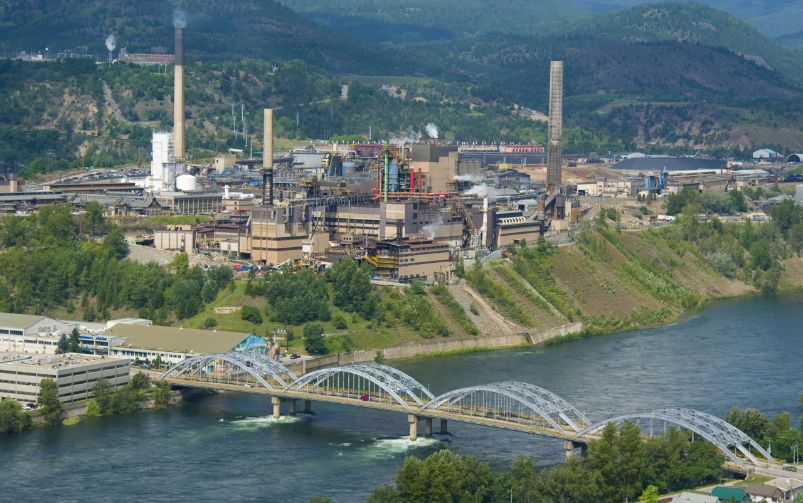The Dumont nickel project, located 25 kilometres west of Amos, Quebec, is described by Dumont Nickel as one of the world’s largest undeveloped nickel sulfide deposits. The company received $1.1 million from the federal government to conduct a feasibility study to connect the project to the Hydro Québec grid through an eight-kilometre transmission line. Courtesy of Dumont Nickel
Jonathan Wilkinson, Canada’s minister of energy and natural resources, announced on Feb. 6 at a press conference at McGill University in Montreal that the federal government would invest up to $43.5 million in conditionally approved funding for critical minerals infrastructure and research in Quebec. He also announced the establishment of a collaboration table between the federal government and the province that would support the development of critical minerals projects.
“I certainly believe that collaboration is what makes this country and this continent great, and it is what will enable our conversation to move from one about tariffs, which are lose-lose, to one which is about prosperity and security, which can be a win-win,” Wilkinson said.
The news came in the early days of U.S. President Donald Trump’s trade war on Canada. “These issues can, at times, seem daunting, but the good news is that Canada is in an excellent position to consolidate economic strengths and be a reliable supplier of choice to the rest of the world, while doing its part to support a global ecological transition to a low-carbon future,” Wilkinson said.
Out of the total, $39.8 million will support six energy and transportation infrastructure projects in Quebec through the Critical Minerals Infrastructure Fund. The largest investment from the sum will provide up to $20 million for Critical Elements Lithium Corporation to build a new main electrical station and move 4.2 kilometres of power transmission line to supply its Rose lithium-tantalum project in Eeyou Istchee James Bay. Critical Elements released a feasibility study for the Rose project in 2023.
Up to $13.5 million will go to Indigenous-owned Eskan Company, which is fully owned by the Cree Nation of Mistissini, to undertake a feasibility study for its Trans-Atikh road project, which would extend the Renard mine access road in northern Quebec by 87 kilometres to connect to lithium projects located in Eeyou Istchee James Bay, such as Winsome Resources’ Adina project.
Emmett MacLeod, president and chief operation officer of Eskan Company, said that it is important for the Nation to control the development of infrastructure on its traditional territory.
“We’re the ones that laid the road for people to come behind, and we’re sensitive to our culture and our environment, to ensure that it is respected, and [that] our values are always maintained as much as possible,” he said. “This is the way that the federal government can work with our people, not only in development, [but] as the first steps [of economic] reconciliation.”
Up to $2.6 million will go to Commerce Resources for a feasibility study for roughly 175 kilometres of access road from a landing point on the Koksoak River to its Ashram rare earth element and fluorspar project in northern Quebec. The company filed a technical report for the Ashram project in July 2024.
Chris Grove, director of corporate development for Commerce Resources, stated that the deposit has the highest percentage globally of neodymium, praseodymium, terbium and dysprosium—rare earth elements that are used in the manufacture of permanent magnets.
“Those last two [terbium and dysprosium] are the heavy rare earth elements that are lacking in the only rare earth element mine in North America, which is in California,” he said. “This is an asset that will provide rare earth elements for the future of the world and will provide a significant amount of domestic security of supply to reduce the western world’s dependency on foreign sources.”
Up to $1.1 million will go to Dumont Nickel to conduct a feasibility study to connect its Dumont project located in the Abitibi region to the Hydro Québec grid through an eight-kilometre transmission line. Dumont expects to make a construction decision this year for the nickel project and if it proceeds, would be aiming for production sometime in 2028.
Up to $1.3 million will be allocated to Sayona Nord Inc. to advance an approximately 55-kilometre transmission line to provide electricity grid connection for its Moblan lithium project located in Eeyou Istchee James Bay. A feasibility study for the Moblan project was released in February 2024.
Up to $1.3 million will be given to Cbay Minerals Inc., the subsidiary of Doré Copper, to complete a feasibility study and environmental and social impact assessment for two-lane gravel roads and 25-kilovolt electrical powerlines connecting its Corner Bay and Devlin copper-gold deposits, located near Chibougamau. Doré Copper released a preliminary economic assessment in 2022 that studied positioning Corner Bay as the main feed to its nearby Copper Rand mill at the site of a past producing underground mine.
Out of the $43.5 million, $3.7 million will be allocated under the Critical Minerals Research, Development and Demonstration program to Coalia, a research and innovation centre in Quebec, to pilot a new lithium extraction and purification process that involves recovering lithium and byproducts from spodumene ore using nitric acid, allowing them to be recycled as nitrogen fertilizers.




